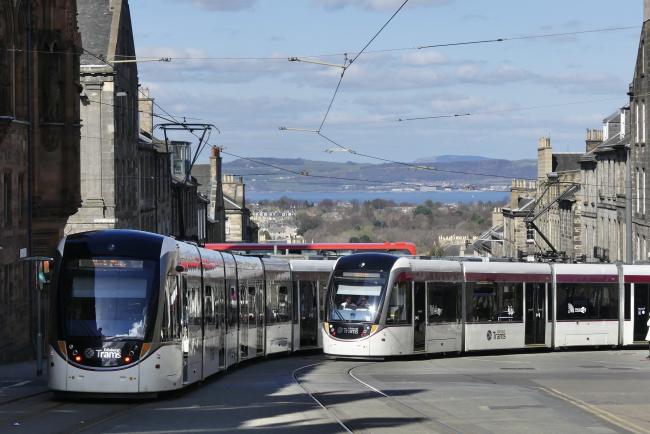
This article is taken from the North Briton (14 January 1871). A condensed version of it appeared in our Issue 327 (1 April 2023).
WITHOUT venturing to discuss at present the vexed question of whether tramways should be held by the Lord Provost and Town Council for the good of the city, or be permitted to exist as the property of a private company, we may be allowed to throw into readable shape a few facts in connection with them which may be new to most of our readers.
Tramways are of ancient invention, and have been more or less used in many countries. Of late years they have been largely used for the conveyance of passengers in some of the largest cities of the world, notably in Paris, Copenhagen, Stuttgardt, New York and other American towns of importance. We have statistics showing that in Copenhagen from four to five millions of passengers annually ride more or less in the tramway carriages. The population of Copenhagen is less than the population of Edinburgh.
The great objection to tramways in London was that the rail projected above the street, which interfered greatly with the ordinary street traffic. The kind of rails just referred to were laid down by Mr Train in Birkenhead, but they had to be removed, and be replaced by another kind laid exactly to correspond with the level of the road, the flange of the wheel going into a sunk groove.
The tramway laid down at Birkenhead is now very much used, and Mr Laird, the member of Parliament for that town, said in the House of Commons that “nothing would cause greater annoyance to the inhabitants of Birkenhead than the removal of the tramway.”

The tramway carriage must run in its own groove; it cannot race in order to pass another carriage, it must steadily pursue its own course, backwards and forwards. Some folks think that tramways would obstruct the traffic, but that is a mistake. New York has a street traffic inferior only to that of London, while the compression at certain points is greater, owing to the narrowness of the peninsular on which that city is built. Yet New York is traversed in all directions by tramways; and in the lower part of that city they pass through streets as narrow, and many of them more inconvenient than any through which it is proposed to carry tramways in London, and yet no obstruction is experienced.
In almost every town in which they have been introduced, more or less objection has been offered to them, but after a trial of the tramways they have so grown in the favour of the public as to become permanent institutions, and have flourished exceedingly.
The tramway carriages will, as a rule, carry more passengers than an omnibus. The model carriages we have seen are large and commodious, luxuriously seated and well-lighted — there is plenty of room between the rows of passengers, and being on a tramway there is not that jostling and inconvenience one experiences in getting seated in the ’bus.
There can be no doubt that sooner or later we shall have them in this city, and there is no city that we know where such lines of haulage will be of greater utility than they will prove in Edinburgh.
